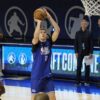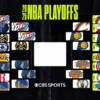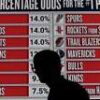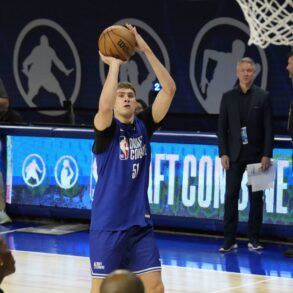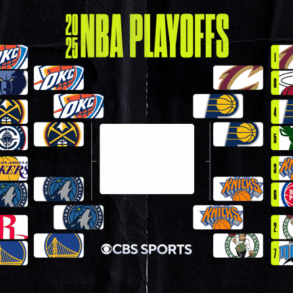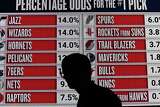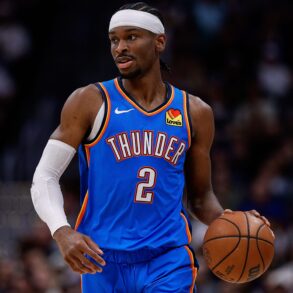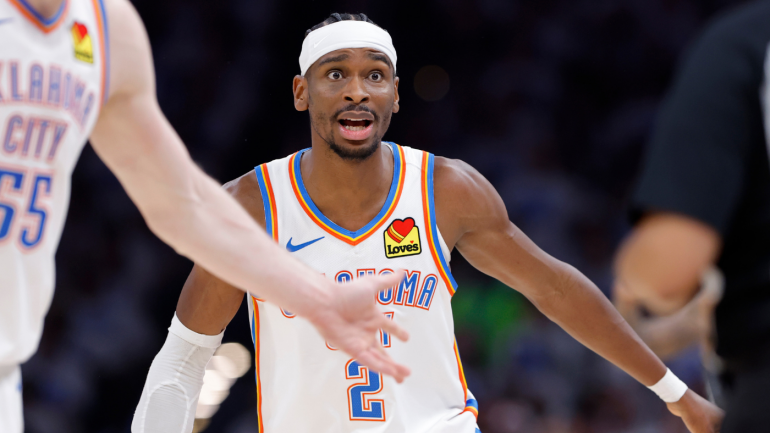
Shai Gilgeous-Alexander is not an ethical hooper. For those unfamiliar with the term, it refers to players who score points without resorting to excessive foul-baiting tactics. Gilgeous-Alexander is far from the only unethical hooper in the NBA. He’s not even the only one still playing in the postseason. Jalen Brunson is almost as guilty. But SGA is certainly the most successful. Only Giannis Antetokounmpo, a big man, attempted more free throws this season. Gilgeous-Alexander will likely soon be awarded an MVP trophy in part because of his ability to get to the line.
And, to be absolutely clear about this, he shouldn’t be blamed for that. Foul-baiting is a skill. Understanding the rules, interpreting how they are being enforced in real time and making decisions within the context of that enforcement is a genuine method of generating value. His job is to help the Oklahoma City Thunder win basketball games. He does that job extraordinarily well. It is not his job to be ethical or entertaining. It is, however, the NBA’s job to create an environment in which he is incentivized to do so.
That is the problem here. It’s not that Gilgeous-Alexander is foul-baiting, but that it’s working. The burden here is on the league to both enforce its existing rules properly and to change broken rules that players learn how to exploit. Game 1 of the Western Conference finals on Tuesday was a reminder to the league to do both, because, despite Oklahoma City’s incredible defensive performance, all anyone is talking about is what the presumptive MVP managed to get away with.
Let’s wind the clocks back a few years. Before Gilgeous-Alexander and Brunson, there was James Harden and Trae Young. The league took active and popular steps to disincentivize their less-ethical habits. Before the 2021-22 season, the NBA announced “an interpretive change in the officiating of overt, abrupt or abnormal non-basketball moves by offensive players with the ball in an effort to draw fouls.” A series of examples of plays that the league had in mind can be found here. I would just like to ask if this represents an overt, abrupt or abnormal non-basketball move by an offensive player with the ball in an effort to draw a foul?
This was more or less exactly what that change was designed to address. Gilgeous-Alexander got Rudy Gobert in the air, leaned into him and wildly threw the ball up hoping for free throws. He got them. It was the right move on his part because he trusted that he could get the whistle. What does it say about a rule change when, only a few years players, players remain confident that it will not be enforced?
What about flopping? Before the 2023-24 season, the NBA introduced a technical foul for flopping on a one-year trial basis. Last summer, they elected to make it permanent. While flopping itself was not reviewable, referees do have the power to call a flop if a replay is triggered through a challenge on a foul call. So what happened on this play? Nickeil Alexander-Walker, Gilgeous-Alexander’s cousin, was called for a foul on this drive. On replay, it was determined that there was no illegal contact. Yet Gilgeous-Alexander ends up on the ground. If there was no illegal contact and he initially got the whistle, it’s hard not to conclude that he wound up there because he was trying to get the whistle. It was a flop. It was not called.
The NBA has mostly abandoned the flopping technical. The likely conclusion there is that it exists as a deterrent. If players know they can get called for flopping, they will theoretically flop less, which in turn decreases the need for flopping calls. But in a way, you could argue that this has empowered floppers further. The NBA tried to do something. It didn’t stick. So the best floppers feel as though they can do it with impunity.
The player that was victimized the most by Gilgeous-Alexander’s tactics, by far, was Jaden McDaniels. What exactly is he supposed to do here? McDaniels maintains a legal guarding position. Gilgeous-Alexander drives, pushes into him with his off-arm, steps back and gets the whistle.
Gilgeous-Alexander, who is the favorite to win NBA Finals MVP as DraftKings lists him with -190 odds, has been getting away with off-arm pushes all season. He’s far from the only player to do so, and this has been a problem. across generations. Maybe the most famous shot in NBA history pretty much was generated by Michael Jordan pushing off of Bryon Russell.
But if it’s not going to be called? Why shouldn’t Jordan push off of Russell? Why shouldn’t Gilgeous-Alexander push off McDaniels? Getting that, specific whistle is enormous valuable to his team. Not only did it send him to the line, but it put an extra foul on McDaniels. As we’ve covered, McDaniels is basically Minnesota’s only chance of successfully defending Gilgeous-Alexander. He fouled out of this game with a bit less than five minutes to go. It was a 12-point game at that point. The Thunder won by 26.
This is all strategically sound basketball on Gilgeous-Alexander’s part. Why shouldn’t he try to force Minnesota’s best perimeter defender off of the floor? Why shouldn’t he try to get to the line when he sees the opportunity to do so? He is doing everything in his power to help his team win within the confines of how the rules are practically enforced. Don’t hate the player, hate the game.
This is ironically similar to one of the issues the NBA fights against most aggressively: tanking. Nobody wants to see teams intentionally lose games. The goal is, of course, to win. But if a team doesn’t see winning as a viable option and an incentive structure exists that rewards losing, teams are inevitably going to try to lose. The NBA can’t fix that without drastically altering the entire structure of the draft.
So long as the concepts of fouls and free throws exist, players are going to look for loopholes to exploit them. It’s almost a game of whack-a-mole. Take away one method of foul-baiting, players find another, and on and on we go. The 2021 changes went a long way in preventing players like Young from stopping on a dime and drawing essentially automatic fouls when trailing defenders crashed into them. But Gilgeous-Alexander is a master at all of the old tricks, so the rules that are meant to deter them need to be enforced, and he constantly develops new ones within the flow of the game, so the NBA needs to be vigilant about updating these rules every offseason to make sure players never get too comfortable with their hacks.
Gilgeous-Alexander’s job may be to win, but the NBA doesn’t care about game outcomes. Its job is to create a product that is as entertaining as possible for its customers. No matter where you fall on the ethics of foul-baiting, what’s clear as day here is that fans don’t like it. Fouls exist to keep defenses in check, not to give offensive players a weapon to use for bailouts in disadvantageous positions. It is not any individual player’s job to look for that balance. It is the league’s.
This post was originally published on this site be sure to check out more of their content.


